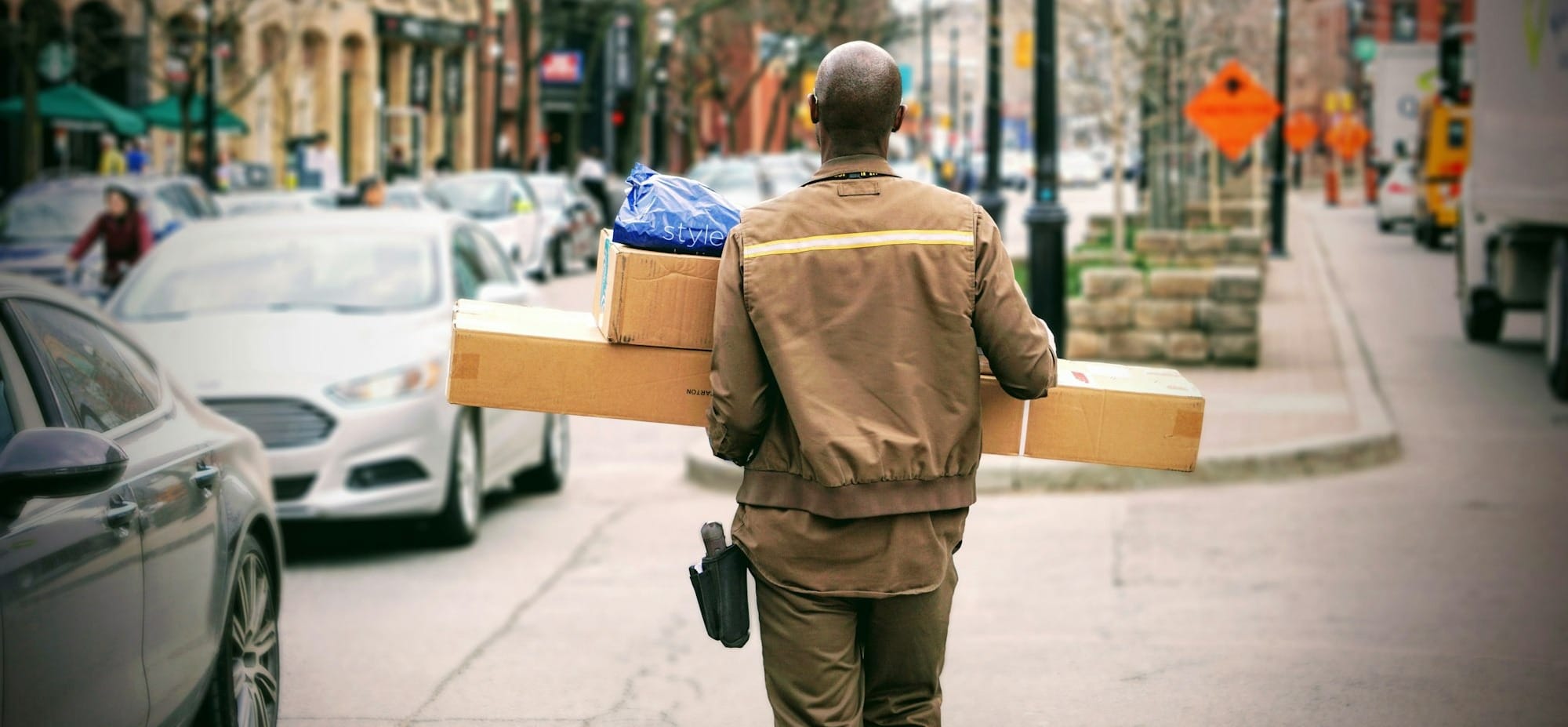The State of eCommerce and Post-Purchase Shipment in North America

The eCommerce experience isn't one-size-fits-all. How customers shop, buy products, and receive shipments varies widely from region to region. Grasping these differences is key for businesses looking to expand and fine-tune their operations. This series explores the unique aspects of the eCommerce landscape around the world.
Today, let's focus on North America. In this region, eCommerce has seen tremendous growth and continues to evolve as technology advances. This has led to changes in consumer behavior, shipping expectations, and overall logistics strategies for businesses operating in this region. Let's take a closer look at the eCommerce landscape in North America, focusing on two of the largest markets: the United States and Canada.
Overview of North American eCommerce
Market Size and Growth Trends
The North American eCommerce market is thriving and is expected to grow strongly in the coming years. Projections show the North American B2C eCommerce market reaching an impressive valuation of USD 2,289 billion by 2030.
Growth trends show that the North American eCommerce market is on the rise, with a compound annual growth rate (CAGR) of 12.5% predicted between 2022 and 2027. In particular, the B2C eCommerce market is expected to grow at a 7% CAGR from 2022 to 2030.
Despite a slowdown from the pandemic-driven surge, the North American eCommerce market in both B2C and B2B segments is still expected to grow steadily. This growth is fueled by rising digital adoption and changing consumer behaviors.
Key Players
The North American eCommerce market is led by heavyweights like Amazon, Walmart, and eBay, who dominate both online sales and marketplace platforms. Alongside these giants, traditional brick-and-mortar retailers such as Target, Best Buy, and Home Depot have made impressive strides in transitioning to the online space.
A notable trend in this market is the rise of direct-to-consumer (DTC) brands. These companies, like Warby Parker and Glossier, bypass traditional retail middlemen, offering unique products and personalized customer experiences through their online platforms. However, the DTC model has complications, including upfront costs and complex supply chain handling. We see a move towards a more omnichannel approach where DTC companies partner with existing retailers or open their brick-and-mortar stores. This strategy gives them more control over the customer experience while leveraging existing infrastructure and resources.
Consumer Behavior and Preferences
North American consumers have become accustomed to the convenience and ease of online shopping, which has led to a shift in their behaviors and preferences. Some key characteristics include:
- Mobile Shopping: Mobile devices account for over 50% of all eCommerce traffic in North America, emphasizing the importance of mobile optimization for businesses.
- Omnichannel Experience: Consumers expect a seamless experience across all channels - online, offline, and social media.
- Free Shipping: A study by Shopify found that 65% of North American consumers prefer free shipping over fast delivery when making online purchases.
These shifting consumer behaviors and preferences significantly impact post-purchase shipment strategies for businesses operating in North America.
Post-Purchase Shipment Practices
Within North America, post-purchase shipment practices can vary significantly between the United States and Canada. Let's examine each country more closely.
Technological Innovations and Trends
Technology has changed the game for logistics and shipping in North American eCommerce. Now, we have better tracking, improved communication, and new delivery methods that meet consumer demands.
Use of Technology in Shipment Tracking and Customer Communication
Staying in touch with customers after a purchase isn't optional; it's essential. Shipment tracking is crucial in building trust and keeping customers updated on their orders. In North America, real-time monitoring and automated notifications have become the norm, and customers now expect this level of communication.
Let's take a look at two scenarios that demonstrate the experience with and without shipment tracking technology:
- Without Tracking Technology: A customer purchases online and receives a confirmation email. They are given updates on their order when it arrives at their doorstep.
- With Tracking Technology: A customer makes an online purchase and immediately receives a confirmation email with a tracking number. Throughout the shipping process, they receive automated notifications, including when their package is out for delivery and when it has been delivered.
As a customer, which scenario would you prefer? Most would undoubtedly choose the second experience. This contrast highlights the importance of harnessing technology in post-purchase shipments to meet consumer expectations and enhance overall satisfaction. This is particularly significant in North America, where swift and transparent delivery is highly valued.
Personalized Notifications and Delivery Methods
If you've ever shopped online, you've likely experienced the nightmare of a missed delivery attempt because you were not at home. Or the experience of clicking on a tracking link and being sent to a generic carrier website with no information about your specific package.
Branded tracking pages and personalized notifications can prevent these issues, keeping customers informed and reducing frustration. The North American consumer has grown accustomed to these personalized experiences, and businesses must keep up with the trend.

Other innovations for post-purchase in North America
With increased expectations for faster and more convenient delivery, companies are exploring new ways to meet these demands. Some interesting technological innovations and trends in the North American eCommerce market include:
- AI-powered shipping time estimates: AI technology provides more accurate shipping time estimates based on weather conditions and traffic patterns. This estimated delivery date (EDD) solution can help manage customer expectations and prevent disappointment if there are any delays.

- Same-Day Delivery: Many businesses now offer same-day delivery services, either through their fleet of vehicles or partnerships with local couriers.
- Drones and Autonomous Vehicles: While still in the early stages, drones and autonomous vehicles are being tested for delivery. This could revolutionize the speed and efficiency of post-purchase shipments.
- Locker Pickup: With the rise of contactless delivery due to the pandemic, locker pickup has become a popular option for customers who do not want deliveries left at their doorstep.
Challenges and Solutions
In the North American eCommerce landscape, post-purchase shipments encounter various challenges. However, businesses are constantly discovering innovative ways to tackle these issues.
Logistics and Infrastructure
One of the main challenges for post-purchase shipments in North America is the vast geographical size and varying population densities. This makes providing fast and cost-effective delivery options for all regional customers challenging.
- Solution: Many companies have turned to advanced logistics technologies, such as route optimization software, to improve delivery times and reduce costs.
Peak Season Demands
During peak periods such as Black Friday or Cyber Monday, there is a significant increase in online orders, putting pressure on eCommerce businesses to meet delivery expectations.
- Solution: To effectively handle peak season demands, many companies now offer alternative shipping options, such as buy online, pick up in-store (BOPIS), or curbside pickup, to alleviate the strain on post-purchase shipments.
Handling Returns and Reverse Logistics
Returns and exchanges are common in eCommerce, but managing them can be challenging for businesses. This is especially true in North America, where return policies are more generous than in other regions.
- Solution: Advanced returns management software and third-party logistics providers can help companies streamline the returns process and reduce costs associated with reverse logistics.

Looking ahead
Post-purchase shipping in North America is evolving rapidly to meet consumer demands. Technology has enhanced tracking and communication, enabling innovations like same-day delivery and autonomous vehicles. Despite challenges like logistics and peak seasons, businesses are finding efficient solutions.
As eCommerce grows, staying updated on shipping trends and advancements is crucial for competitiveness. Embracing tech innovations and adapting to consumer expectations are critical to success in this dynamic landscape.
Stay tuned for our next blog to explore how these cutting-edge logistics strategies are being implemented in the European market. We'll explore unique regional challenges and success stories, providing insights that can be applied globally.

